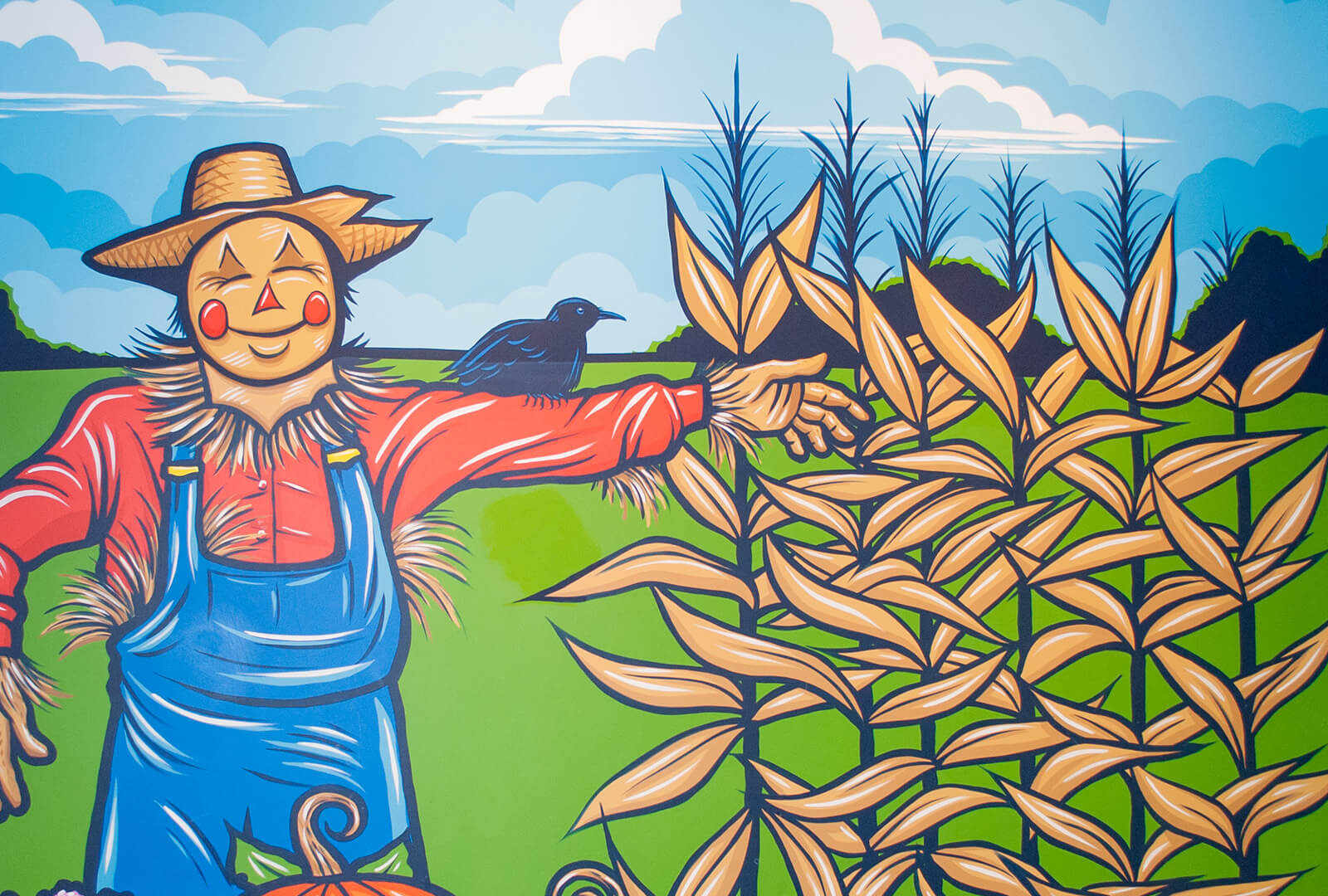Turman’s use of bright colors and bold design made him an ideal candidate to paint the mural. So, in 2016, with sketches approved, he came to town to bring his vision to life. “It has a traditional farmland quality, and the background has a little bit of city to show the end user,” Turman said.
The walls were prepped and primed, giving him the blank canvas he needed. After masking off his area, Turman went about the task of drawing a grid that helped him keep everything in proportion. He sketched the scene in pencil and used high-end house paint and a scenic paint that he mixed by hand to give it color. When all was said and done, the mural took five or six full days to complete, including the spur-of-the-moment additions of mums at the scarecrow’s feet and a crow on its arm, details Turman knew “would be fun.”
He worked alone, but there were teams of designers elsewhere in the museum, readying exhibits and displays for opening day. They all became fast friends, Turman recalled, ending their 12- or 13-hour days with communal dinners and at times, a few games of bowling. The town of Austin welcomed the transplants with open arms.
After three years of operation, the SPAM® Museum has been highlighted by some of the most notable publications and travel sites in the world. It welcomes approximately 30,000 children every year, Lord said, and most of them head to the area anchored by Turman’s contribution to the award-winning attraction.
“It is a very popular area of the museum,” she said, commenting that families often pose for photo ops in front of the mural. “It serves two great purposes: It helps locals with kids get through the long Minnesota winters, and it gives families on long road trips an opportunity to have their kids get rid of some energy before piling back in the car.”
But perhaps the artwork does something even more valuable.
“It’s an important reminder that each one of us is impacted by agriculture,” Lord said.

